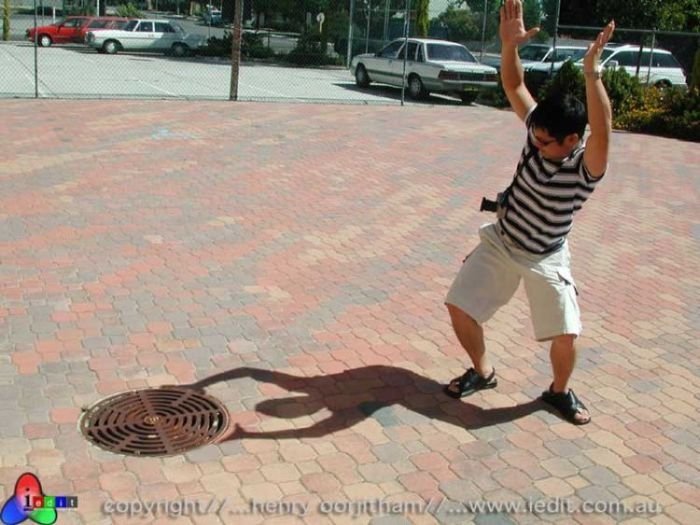|
|
Shadows Art
|
A shadow is an area where direct light from a light source cannot reach due to obstruction by an object. It occupies all of the space behind an opaque object with light in front of it. The cross section of a shadow is a two-dimensional silhouette, or reverse projection of the object blocking the light. An astronomical object casts human-visible shadows when its apparent magnitude is equal or lower than -4. Currently the only astronomical objects able to produce visible shadows on Earth are the sun, the moon and, in the right conditions, the planets of Mercury and Venus.
Length of Shadow = Tan(θ).a : Where a = object's height, and θ = angle between the point of light and the object. Shadow length changes dramatically throughout the day. The length of a shadow cast on the ground is proportional to the cotangent of the sun's elevation angle—its angle θ relative to the horizon. Near sunrise and sunset, when θ = 0° and cot(θ) is infinite, shadows can be extremely long. If the sun passes directly overhead, then θ = 90°, cot(θ)=0, and shadows are cast directly underneath objects.
|
|









